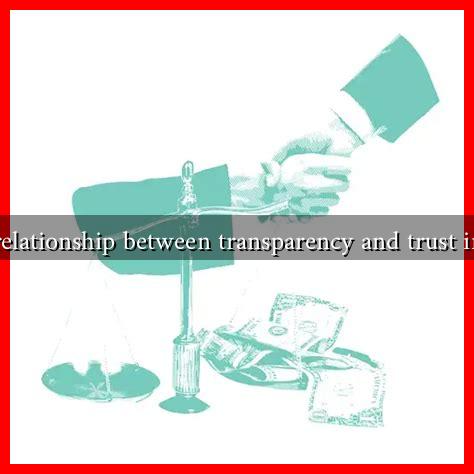-
Table of Contents
What is the Relationship Between Transparency and Trust in Governance?
In the realm of governance, the concepts of transparency and trust are inextricably linked. Transparency refers to the openness and accessibility of government actions, decisions, and processes, while trust is the confidence that citizens have in their government to act in their best interests. This article explores the intricate relationship between these two concepts, highlighting their significance in fostering effective governance.
The Importance of Transparency in Governance
Transparency is a cornerstone of democratic governance. It allows citizens to understand how decisions are made, who is making them, and the rationale behind those decisions. When governments operate transparently, they are more likely to be held accountable for their actions. Key aspects of transparency include:
- Access to Information: Citizens should have the right to access government data, reports, and decision-making processes.
- Open Communication: Governments should engage in clear and honest communication with the public.
- Accountability Mechanisms: Systems should be in place to hold officials accountable for their actions.
For instance, the Freedom of Information Act (FOIA) in the United States allows citizens to request access to federal agency records, promoting transparency and accountability. According to a report by the Sunlight Foundation, increased transparency can lead to a reduction in corruption and improved public trust.
Trust as a Pillar of Effective Governance
Trust in governance is essential for the stability and functionality of a society. When citizens trust their government, they are more likely to comply with laws, participate in civic activities, and support government initiatives. Trust can be influenced by various factors, including:
- Past Performance: A government’s track record in delivering services and upholding the rule of law can significantly impact public trust.
- Public Engagement: Involving citizens in decision-making processes fosters a sense of ownership and trust.
- Integrity and Ethics: The ethical behavior of public officials plays a crucial role in building trust.
A study by the Edelman Trust Barometer found that 67% of respondents believe that a transparent government is essential for building trust. This statistic underscores the importance of transparency in fostering a trusting relationship between citizens and their government.
The Interplay Between Transparency and Trust
The relationship between transparency and trust is reciprocal. Increased transparency can lead to higher levels of trust, while a lack of transparency can erode trust. Here are some key points illustrating this interplay:
- Enhanced Accountability: Transparency allows citizens to hold their leaders accountable, which can enhance trust.
- Reduction of Misinformation: When information is readily available, it reduces the chances of misinformation, thereby fostering trust.
- Empowerment of Citizens: Transparency empowers citizens to engage with their government, leading to a more informed and trusting populace.
For example, the case of New Zealand’s government during the COVID-19 pandemic showcased how transparency in communication and decision-making led to high levels of public trust. The government provided regular updates, clear guidelines, and engaged with citizens, resulting in a strong public response to health measures.
Challenges to Achieving Transparency and Trust
Despite the clear benefits of transparency and trust, several challenges persist:
- Bureaucratic Resistance: Some government officials may resist transparency due to fear of scrutiny.
- Information Overload: Too much information can overwhelm citizens, making it difficult for them to discern what is relevant.
- Digital Divide: Not all citizens have equal access to information technology, which can hinder transparency efforts.
Addressing these challenges requires a concerted effort from governments, civil society, and citizens alike. Initiatives such as open data platforms and public forums can help bridge the gap between transparency and trust.
Conclusion
The relationship between transparency and trust in governance is vital for the health of democratic societies. Transparency fosters accountability, reduces misinformation, and empowers citizens, all of which contribute to building trust. Conversely, a lack of transparency can lead to distrust and disengagement. As governments strive to enhance their transparency efforts, they must also consider the challenges that may impede progress. Ultimately, a commitment to transparency is not just a policy choice; it is a fundamental requirement for effective governance and a thriving democracy.
For further reading on the importance of transparency in governance, you can visit Transparency International.


